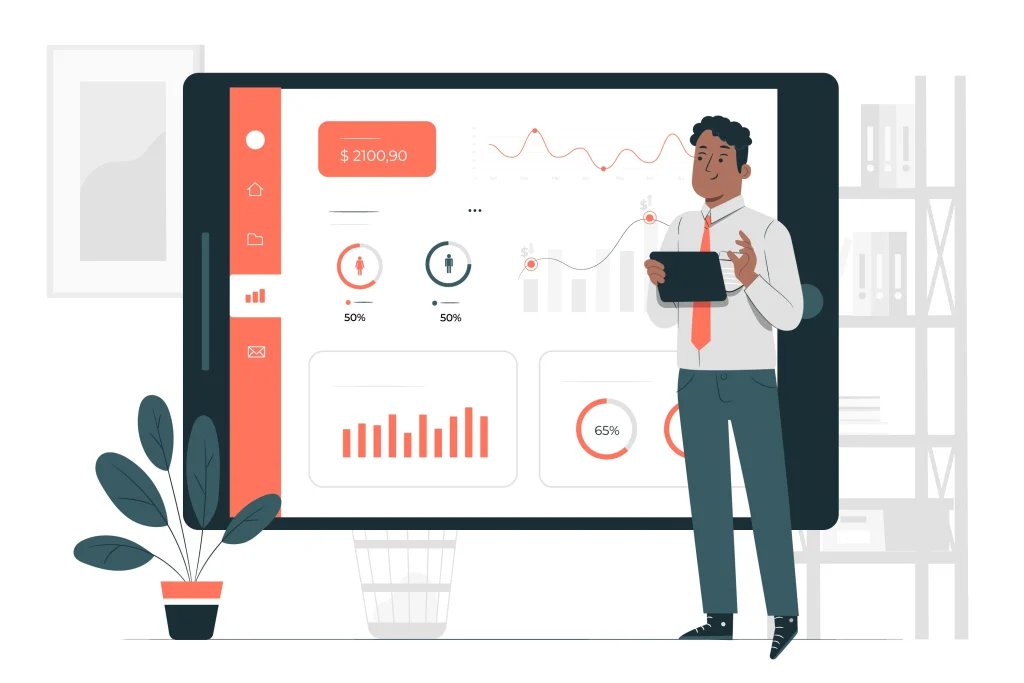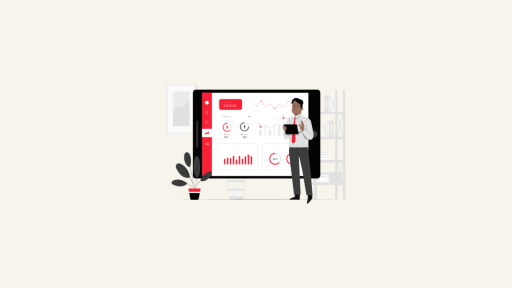
In the dynamic landscape of modern workplaces, cultivating a motivated and engaged workforce is a paramount goal for organizations striving for success. Among the myriad strategies employed to achieve this, the design and implementation of a comprehensive employee bonus program stand out as a strategic imperative. Recognizing the pivotal role incentives play in driving performance, fostering a positive culture, and retaining top talent, organizations embark on crafting a robust bonus program. This step-by-step guide aims to demystify this intricate process, providing insights and practical considerations to empower organizations to create a program that meets the unique needs of their workforce and aligns seamlessly with overarching organizational goals.
Why Employee Bonus Programs Matter:
Employee bonus programs extend beyond mere monetary rewards; they reflect an organization’s commitment to recognizing and valuing the contributions of its workforce. A well-crafted bonus program catalyzes heightened performance, increased job satisfaction, and the cultivation of a positive workplace culture. As organizations navigate the intricacies of today’s competitive talent landscape, the strategic implementation of a bonus program emerges as a key differentiator, attracting and retaining top talent while instilling a sense of loyalty and motivation among existing team members.

Step 1: Define Objectives and Goals
Establishing a robust employee bonus program begins with a fundamental step: defining clear objectives and goals. This initial phase lays the groundwork for the entire program, shaping its purpose and aligning it with the broader strategic vision of the organization. In this section, we delve into the significance of setting objectives and goals, outlining how this critical step contributes to the success of your bonus program.
Why Define Objectives and Goals?
- Guiding Purpose: Clear objectives provide a guiding purpose for the bonus program. Whether your goal is to boost individual performance, enhance teamwork, or achieve specific business targets, articulating these objectives from the outset ensures a unified direction for the program.
- Alignment with Organizational Strategy: Objectives and goals should align seamlessly with the broader organizational strategy. This alignment ensures that the bonus program becomes an integral part of the company’s overall mission, contributing directly to its success and growth.
- Employee Engagement and Motivation: Well-defined goals serve as motivators for employees. When individuals understand what is expected of them and how their performance contributes to the company’s objectives, they are more likely to be engaged, motivated, and committed to achieving those goals.
- Measurable Outcomes: Clear objectives enable the identification of measurable outcomes. This measurability is crucial for assessing the success of the bonus program over time, allowing for data-driven adjustments and improvements.
- Transparency and Communication: Articulating objectives fosters transparency. Employees need to comprehend the purpose of the bonus program, the criteria for earning bonuses, and the expected outcomes. Transparent communication builds trust and helps manage expectations.
Steps in Defining Objectives and Goals:
- Conduct a Needs Assessment: Understand the specific needs of your organization. Identify areas where performance improvements or collaborative efforts can contribute most significantly to overall success.
- Involve Stakeholders: Engage key stakeholders, including executives, managers, and employees, in the goal-setting process. Their input ensures a comprehensive understanding of organizational needs and aspirations.
- Prioritize Objectives: Rank objectives based on their strategic importance. This prioritization helps in focusing efforts and resources on the most critical areas that align with the company’s overall vision.
- Ensure SMART Criteria: Objectives should be Specific, Measurable, Achievable, Relevant, and Time-bound (SMART). This ensures clarity and provides a framework for assessing progress.
Defining clear objectives and goals for your employee bonus program is the cornerstone of its success. By establishing a guiding purpose, aligning with organizational strategy, motivating employees, identifying measurable outcomes, and fostering transparency, you set the stage for a program that not only rewards performance but also contributes significantly to the overall success of your organization. As you embark on this journey, keep in mind that revisiting and refining objectives over time ensures the continued relevance and effectiveness of your bonus program.

Step 2: Understand Your Budget
Embarking on the journey to create an impactful employee bonus program necessitates a keen understanding of your financial resources. The second crucial step in this comprehensive guide is to “Understand Your Budget.” In this section, we delve into the significance of financial considerations, providing insights into how a clear understanding of your budget sets the foundation for a sustainable and effective bonus program.
Why Understanding Your Budget is Crucial?
- Financial Feasibility: A clear understanding of your budget ensures the financial feasibility of your bonus program. It establishes the boundaries within which you can design an incentive structure that aligns with both your organizational goals and available resources.
- Strategic Allocation of Resources: Knowing your budget allows for a strategic allocation of resources. You can determine whether monetary bonuses, non-monetary incentives, or a combination of both is viable, providing a roadmap for designing a program that maximizes impact within your financial constraints.
- Long-Term Sustainability: A realistic grasp of your budget ensures the long-term sustainability of the bonus program. It helps avoid overcommitting resources and allows for the continuous support and maintenance of the program even during periods of economic fluctuation.
- Employee Perception: Understanding your budget is crucial for managing employee expectations. Transparent communication about the financial scope of the bonus program helps set realistic expectations and fosters a sense of trust and fairness among employees.
Steps in Understanding Your Budget:
- Conduct a Financial Analysis: Evaluate your organization’s financial health by conducting a thorough analysis. Consider revenue streams, operating expenses, and any budgetary constraints that might impact the bonus program.
- Define the Bonus Pool: Determine the total amount available for the bonus program. This could be a percentage of profits, a fixed budget allocation, or other financial benchmarks aligned with your organizational strategy.
- Consider Types of Bonuses: Decide whether the bonuses will be monetary, non-monetary, or a combination of both. This decision should align with both your budget and the preferences of your workforce.
- Account for Taxes and Other Costs: Factor in taxes and any associated costs when planning the bonus program. Understanding the net impact on both the organization and employees is crucial for accurate budgeting.
Understanding your budget is pivotal to crafting a successful employee bonus program. By ensuring financial feasibility, strategically allocating resources, promoting long-term sustainability, and managing employee perceptions, a well-informed budget lays the groundwork for a program that not only motivates but is also aligned with your organization’s financial health. As you navigate the financial landscape, remember that continuous monitoring and adaptability are key to maintaining the effectiveness of your bonus program over time.

Step 3: Identify Performance Metrics
The third pivotal step in crafting a compelling employee bonus program is to “Identify Performance Metrics.” This section explores the importance of selecting the right performance metrics, emphasizing how a well-defined set of criteria contributes to the program’s effectiveness. By aligning metrics with organizational goals, you ensure the bonus program becomes a strategic tool for driving performance and achieving desired outcomes.
Why Identifying Performance Metrics Matters:
- Strategic Alignment: Identifying performance metrics ensures that the bonus program aligns strategically with organizational goals. By choosing metrics that reflect desired outcomes, you create a direct link between individual or team performance and the overarching success of the company.
- Measurable Objectives: Performance metrics provide tangible and measurable objectives for employees. This clarity empowers individuals to understand their role in the organization’s success and gives them specific targets to strive for in order to qualify for bonuses.
- Fair and Transparent Evaluation: Clear performance metrics contribute to a fair and transparent evaluation process. When employees understand the criteria for earning bonuses, it fosters a sense of equity and trust within the organization.
- Motivational Impact: Well-chosen metrics can serve as powerful motivational tools. When employees see a direct correlation between their efforts and the potential for bonus rewards, it enhances their motivation, engagement, and commitment to achieving high performance.
Steps in Identifying Performance Metrics:
- Define Organizational Goals: Start by identifying and defining the overarching goals of your organization. These could be related to revenue growth, customer satisfaction, operational efficiency, or any other key performance indicators that drive success.
- Cascade Goals to Departments and Individuals: Break down these organizational goals into departmental and individual objectives. Ensure that each level of the organization has specific, measurable, and achievable targets that contribute to the larger organizational goals.
- Select Quantifiable Metrics: Choose metrics that are quantifiable and directly tied to performance. Whether it’s individual sales targets, project completion timelines, or customer satisfaction scores, select metrics that can be objectively measured.
- Consider a Balanced Approach: Aim for a balanced approach in selecting metrics. Include a mix of short-term and long-term goals, individual and team achievements, and both quantitative and qualitative measures to provide a comprehensive view of performance.
Identifying performance metrics is a cornerstone in designing an impactful employee bonus program. Through strategic alignment with organizational goals, measurable objectives, fair and transparent evaluation, and motivational impact, well-defined metrics contribute to a program that rewards performance and propels the entire organization toward success. As you embark on this step, keep in mind that regularly reassessing and adapting performance metrics ensures that the bonus program remains relevant and effective in an ever-evolving business landscape.

Step 4: Choose the Right Bonus Structure
In the intricate process of creating a compelling employee bonus program, selecting the right bonus structure stands out as a critical decision. This fourth step is pivotal to the program’s success, as the structure not only shapes the distribution of incentives but also influences employee motivation and overall organizational culture. In this section, we will explore the importance of choosing the right bonus structure and outline key considerations for making this crucial decision.
Why Choosing the Right Bonus Structure Matters:
- Cultural Alignment: The bonus structure should align with your organization’s culture and values. Whether emphasizing individual achievements, fostering teamwork, or promoting company-wide collaboration, the chosen structure should resonate with the cultural fabric of your workplace.
- Motivational Impact: Different bonus structures have varying motivational impacts on employees. Understanding the unique drivers of your workforce—whether they are motivated by individual recognition, team success, or overall company performance—enables you to tailor the structure for maximum motivational effect.
- Strategic Objectives: The bonus structure should directly support your organization’s strategic objectives. Whether it’s driving sales, improving customer satisfaction, or enhancing innovation, the chosen structure should create a clear link between employee performance and the achievement of strategic goals.
- Equitable Distribution: Strive for an equitable distribution of bonuses. The chosen structure should be perceived as fair by employees, avoiding potential disparities that could lead to dissatisfaction and a decrease in overall morale.
Steps in Choosing the Right Bonus Structure:
- Assess Organizational Culture: Understand the prevailing culture within your organization. Is it individual-centric, team-oriented, or focused on overall company success? Tailor the bonus structure to complement and reinforce this existing culture.
- Identify Motivational Drivers: Conduct surveys or interviews to identify what motivates your employees. Recognize whether they are primarily driven by individual recognition, collaborative achievements, or broader company success. This insight will guide the design of the bonus structure.
- Align with Strategic Goals: Ensure that the bonus structure aligns with the strategic goals of the organization. If increasing sales is a key objective, consider individual or team-based performance bonuses tied to sales targets. Aligning incentives with strategic priorities reinforces organizational focus.
- Consider Flexibility: Opt for a structure that allows for some degree of flexibility. Business landscapes evolve, and a flexible bonus structure can be adjusted to accommodate changes in goals, priorities, or employee preferences.
Choosing the right bonus structure is a pivotal decision that shapes the success and impact of your employee bonus program. By aligning with organizational culture, understanding motivational drivers, supporting strategic goals, and ensuring equitable distribution, the selected structure becomes a catalyst for motivation, engagement, and success. As you navigate this step, remember that periodic evaluations and adjustments to the bonus structure are essential to maintain alignment with evolving organizational dynamics and employee needs.

Step 5: Set Clear and Achievable Targets
The importance of setting clear and achievable targets cannot be overstated in the intricate dance of creating an impactful employee bonus program. This fifth step is a linchpin in the program’s success, as the targets established serve as the roadmap for employee performance and subsequent bonus distribution. In this section, we will delve into the significance of clear and achievable targets, outlining how they contribute to employee motivation, engagement, and the overall success of the bonus program.
Why Setting Clear and Achievable Targets Matters:
- Clarity and Focus: Clear targets provide employees with a sense of clarity and focus. When expectations are well-defined, individuals understand what is required of them, enabling them to direct their efforts purposefully towards achieving set goals.
- Motivational Catalyst: Achievable targets serve as a motivational catalyst. When employees see a realistic path to earning bonuses, it enhances their motivation and commitment to meeting or exceeding performance expectations.
- Fair and Transparent Evaluation: Clear and achievable targets contribute to a fair and transparent evaluation process. Employees can measure their progress against well-defined criteria, fostering a sense of equity and trust within the organization.
- Alignment with Organizational Goals: Targets should align seamlessly with organizational goals. When individual or team targets directly contribute to the larger success of the company, it strengthens the alignment between employee efforts and strategic objectives.
Steps in Setting Clear and Achievable Targets:
- Review Performance Metrics: Referencing the previously identified performance metrics, establish specific, measurable, and achievable targets for employees. Ensure that these targets are directly linked to the desired outcomes outlined in the organizational goals.
- Consider Historical Performance: Take into account historical performance data when setting targets. Analyze past achievements, challenges, and trends to establish realistic benchmarks that reflect both the potential for improvement and the actual capabilities of the workforce.
- Involve Employees in the Process: Whenever feasible, involve employees in the target-setting process. This not only fosters a sense of ownership and accountability but also provides valuable insights into the feasibility and motivational impact of the targets.
- Provide Clarity on Bonus Structure: Clearly communicate how the achievement of targets corresponds to bonus payouts. Transparency in this regard ensures that employees understand the direct correlation between their performance and potential rewards.
Setting clear and achievable targets is a cornerstone in designing an effective employee bonus program. Through providing clarity and focus, acting as a motivational catalyst, contributing to fair and transparent evaluation, and aligning with organizational goals, well-defined targets create a performance-driven culture that benefits both individuals and the organization as a whole. As you navigate this step, keep in mind that targets should be periodically reviewed and adjusted to reflect changing business conditions, ensuring your bonus program’s continued relevance and effectiveness.

Step 6: Implement a Fair and Transparent System
As you embark on the journey of creating a robust employee bonus program, implementing a fair and transparent system stands out as a cornerstone in fostering trust, engagement, and overall program success. This sixth step is critical, as the perceived fairness of the bonus distribution process directly impacts employee morale and organizational culture. In this section, we will explore the significance of a fair and transparent system, providing insights into how it contributes to a positive and motivating work environment.
Why Implementing a Fair and Transparent System Matters:
- Trust Building: A fair and transparent system builds trust among employees. When individuals understand how bonuses are calculated and distributed, it mitigates concerns of favoritism or bias, fostering a culture of trust within the organization.
- Motivational Impact: Transparency in the bonus process enhances its motivational impact. When employees clearly see the link between their performance and bonus outcomes, it serves as a powerful motivator, encouraging continued high performance.
- Employee Satisfaction: A fair system contributes to higher levels of employee satisfaction. When individuals perceive the bonus program as fair, it enhances their overall job satisfaction and commitment to the organization.
- Retention and Recruitment: A transparent bonus system can be a significant factor in employee retention and recruitment. Organizations with fair and transparent reward systems are often more attractive to both current and potential employees.
Steps in Implementing a Fair and Transparent System:
- Communicate Clearly: Clearly communicate the criteria and processes for bonus calculations. Ensure that employees have a thorough understanding of how their performance aligns with the established targets and how bonuses are determined.
- Provide Regular Updates: Keep employees informed about their progress toward bonus targets throughout the performance period. Regular updates create transparency and allow individuals to gauge their performance against set expectations.
- Establish Clear Evaluation Protocols: Define clear protocols for evaluating employee performance. Avoid ambiguity and ensure that the evaluation criteria are objective, measurable, and consistently applied across all team members.
- Address Concerns Proactively: Actively address any concerns or questions related to the bonus program. Proactive communication and resolution of issues demonstrate a commitment to fairness and transparency.
Implementing a fair and transparent system for your employee bonus program is not just a procedural necessity; it’s a fundamental building block for a positive workplace culture. By fostering trust, enhancing motivational impact, increasing employee satisfaction, and contributing to retention and recruitment efforts, a fair and transparent system becomes a catalyst for overall organizational success. As you navigate this step, remember that continuous communication, responsiveness to concerns, and periodic reviews are essential to maintaining the integrity and effectiveness of your bonus program over time.

Step 7: Communicate Effectively
Communication is the lifeblood of any successful organization, and effective communication is paramount in an employee bonus program. This seventh step plays a pivotal role in ensuring that employees are well-informed, engaged, and motivated by the bonus program. In this section, we will delve into the significance of effective communication, exploring how clear and consistent messaging contributes to program success.
Why Effective Communication Matters:
- Clarity and Understanding: Effective communication ensures that employees have a clear understanding of the bonus program, including its objectives, criteria, and the linkage between performance and rewards. Clarity minimizes confusion and fosters a sense of purpose among employees.
- Motivational Impact: Well-communicated bonus programs have a more significant motivational impact. When employees comprehend the direct correlation between their efforts and potential rewards, it enhances their motivation and commitment to achieving performance targets.
- Alignment with Organizational Goals: Communication aligns employees with broader organizational goals. Articulating how the bonus program contributes to the success of the company helps individuals see the bigger picture and understand their role in achieving strategic objectives.
- Employee Engagement: Effective communication promotes employee engagement. Regular updates, feedback, and celebration of achievements create a dynamic and interactive communication environment, making employees feel valued and involved.
Steps in Effective Communication:
- Launch Communication: Clearly communicate the launch of the bonus program, detailing its purpose, objectives, and the expected impact on employee performance. Set the tone for transparent and open communication from the outset.
- Provide Detailed Program Information: Furnish employees with detailed information about the bonus program, including eligibility criteria, performance metrics, and the structure of bonus payouts. The more informed employees are, the more invested they become in the program’s success.
- Regular Updates: Provide regular updates on individual and team performance against bonus targets. Regular communication keeps employees engaged and allows for course corrections if needed to ensure the program remains aligned with organizational goals.
- Celebrate Achievements: Publicly acknowledge and celebrate individual and team achievements. Recognition reinforces the positive aspects of the bonus program, motivating employees and creating a culture of appreciation.
Effective communication is the linchpin that holds together a successful employee bonus program. By prioritizing clarity and understanding, enhancing motivational impact, aligning with organizational goals, and promoting employee engagement, well-communicated bonus programs contribute to a positive and thriving workplace culture. As you navigate this step, remember that communication is an ongoing process, and staying responsive to employee feedback and questions ensures that your bonus program remains a dynamic and impactful part of your organization’s strategy.

Step 8: Monitor and Evaluate
Successfully implementing an employee bonus program is just the beginning. The eighth and final step involves monitoring and evaluating the program to ensure ongoing effectiveness and alignment with organizational goals. This crucial phase enables organizations to adapt to changing circumstances, address emerging challenges, and continuously refine the bonus program for optimal impact. In this section, we will explore the significance of monitoring and evaluation, providing insights into the continuous improvement of your bonus program.
Why Monitoring and Evaluation Matters:
- Adaptability to Change: The business landscape is dynamic, and an effective bonus program must adapt to changing circumstances. Regular monitoring and evaluation allow organizations to identify shifts in priorities, market conditions, or employee preferences and make necessary adjustments.
- Identifying Successes and Challenges: Monitoring and evaluation provide a structured approach to identify both successes and challenges within the bonus program. Recognizing what is working well allows organizations to reinforce positive aspects, while addressing challenges prevents potential pitfalls from escalating.
- Employee Feedback and Satisfaction: Ongoing evaluation allows organizations to gather employee feedback regarding the bonus program. Understanding employee perceptions and satisfaction levels enables targeted improvements and ensures the program remains a positive motivator.
- Strategic Alignment: Continuous monitoring ensures that the bonus program stays aligned with the organization’s broader strategic goals. If organizational priorities shift, the bonus program can be adjusted to maintain relevance and effectiveness.
Steps in Monitoring and Evaluation:
- Establish Key Performance Indicators (KPIs): Define key performance indicators to measure the success of the bonus program. KPIs could include employee satisfaction, achievement of organizational goals, retention rates, and overall program cost-effectiveness.
- Regular Data Collection: Implement a systematic process for regularly collecting relevant data. This may involve surveys, performance reviews, financial assessments, or other methods that comprehensively understand the bonus program’s impact.
- Employee Feedback Mechanisms: Establish mechanisms for ongoing employee feedback. Surveys, focus groups, and one-on-one discussions allow employees to share their experiences, concerns, and suggestions regarding the bonus program.
- Benchmarking Against Industry Standards: Compare your bonus program against industry standards and best practices. Benchmarking ensures that your organization remains competitive and continues to offer an attractive and effective bonus program.
Monitoring and evaluating your employee bonus program is not a one-time event but an ongoing commitment to excellence. Organizations can maintain a dynamic and impactful bonus program by adapting to change, identifying successes and challenges, incorporating employee feedback, and ensuring strategic alignment. As you navigate this continuous cycle, remember that the insights gained from monitoring and evaluation are invaluable for refining and optimizing your bonus program to meet your organization’s and workforce’s evolving needs.

Additional
Tailor Rewards to Individual Preferences
Acknowledge diverse preferences by offering a mix of rewards, including monetary bonuses, extra time off, professional development opportunities, or personalized perks.
Foster a Culture of Recognition
Integrate the bonus program into a broader culture of recognition, encouraging managers and colleagues to acknowledge and celebrate each other’s achievements.
Provide Opportunities for Skill Development
Consider incorporating skill development opportunities as part of the bonus program, investing in employees’ professional growth.
Ensure Accessibility for All Employees
Make the bonus program accessible to all employees, ensuring that every team member has a meaningful opportunity to participate and be rewarded.
Solicit Employee Input
Engage employees in decision-making by seeking their input on the bonus program, fostering a sense of ownership and inclusivity.
Consider Long-Term Incentives
Explore long-term incentives such as stock options or profit-sharing plans to align employees with the company’s long-term success.
Monitor Market Trends
Stay informed about industry and market trends related to employee compensation and benefits, regularly updating your bonus program to remain competitive.
Conclusion
Creating a comprehensive employee bonus program is not a one-size-fits-all endeavor but a nuanced and strategic process that carefully considers organizational goals, employee preferences, and market dynamics. By following the step-by-step guide outlined herein, organizations can confidently embark on this transformative journey, knowing that their bonus program is not only aligned with strategic objectives but also tailored to their workforce’s diverse needs and preferences. As the business landscape evolves, the adaptability of the bonus program remains paramount, necessitating periodic reviews and adjustments to ensure continued effectiveness. Ultimately, a well-crafted employee bonus program invests in the organization’s success and the well-being of its most valuable asset – its people.
This article was created by the FirstHR team. You can find even more helpful HR tips in the Guides section. In the Template section we have prepared for you the most popular HR documents that you can download for free. Enjoy!





